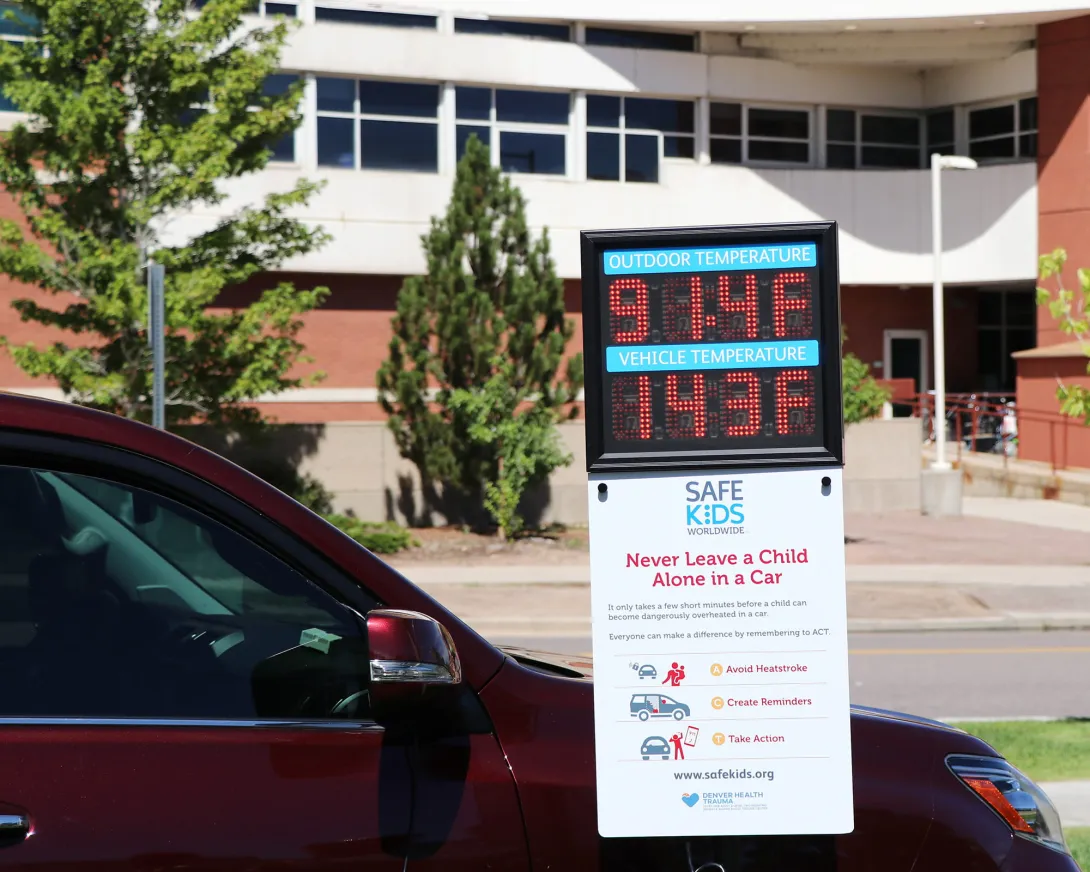July 16, 2024

With summer officially in full swing, Colorado is heading into its hottest months of the year. According to the Colorado Department of transportation, Denver experienced 100 days in 2023 where temperatures were over 80 degrees. While it is important to remember the vehicular heat stroke can occur in temperatures as low as 57 degrees, the high volume of hot days in Denver greatly increases the risk of hot car deaths, especially among children. In 2023, there were 29 U.S. children who died due to vehicular heat stroke and since 1998, 973 children have died in hot cars. Each of these deaths could have been prevented through better understanding of why children should not be left alone in cars and how to prevent this from happening unintentionally.
There are several circumstances that can lead to hot car deaths. Since 1998, 52% of hot car deaths were a result of adults unknowingly leaving children in the car while the remaining deaths resulted from children either gaining unsupervised access to a vehicle or being purposefully left in the car. According to No Heat Stroke, operated by San Jose State University, 80% of the total increase in car temperature occurs in the first 30 minutes that a car is turned off. On top of this, the core temperature of children increases five times quicker than that of adults. For this reason, children being left in the car for even short amounts of time can threaten their health and greatly increase the risk of vehicular heatstroke. The Denver Health Trauma and Injury Prevention Program offers a few tips for parents and caregivers this summer to prevent vehicular heatstroke.
- Never leave a child, pet, or vulnerable person alone in a car, even for a few minutes. The inside of a vehicle can reach dangerous temperatures in as little as 10 minutes, and rolling windows down does little to cool a vehicle. Running in for a quick errand does not justify leaving a child in a vehicle, as time away from your vehicle can be unpredictable.
- Make it a habit to always look in the backseat before you leave the car. Placing your wallet, phone, or purse in the backseat while driving are great ways to force you to check the backseat before exiting a vehicle. Since mistakes can happen, the best way to prevent vehicular heatstroke is to ‘look before you lock.’
- Arrange to have your childcare provider contact you if your child doesn’t show up that day. Make sure they have multiple contact numbers and people to check with in the event that you are not answering, and that they will continue calling until they reach someone.
- Keep all vehicles locked, even when they are in the garage. Keep keys and fobs out of reach. Roughly 25% of vehicular heat stroke deaths among children were a result of unauthorized access to a vehicle. Eliminating easy access to your vehicle, by either your own kids or children in your neighborhood, is crucial to preventing hot car deaths.
- Teach your children that it is NEVER OK to play in the car to go into the car to get something without an adult. Even older kids are at risk of vehicular heatstroke if they become trapped in the car without your knowledge.
- Teach your child to NEVER hide in the car or inside the trunk.
- If your child is missing, first check your pool and then check your vehicle (including the trunk!). Then check neighbor’s pools and vehicles second.
- Teach your children to blow the car horn repeatedly to attract attention and signal for help if they are ever trapped inside a vehicle.
- If you see a child alone in a car and unresponsive/in distress, alert nearby authorities and do what you can to get the child out of the car. Good Samaritan laws in Colorado will protect you if you are acting in the best interest of the child or a pet. Once the child is out of the car, use cool water to lower their body temperature.
- If you see a child alone in the car and they are responsive, have someone else try to find the driver or send out an announcement, but do not wait more than a few minutes for the parent to return to act. After a few minutes, you should alert authorities and attempt to get the child out of the vehicle.
For additional information on heat stroke, please contact Denver Health’s Injury Prevention Coordinator, Margaret Rose, at Margaret.Rose@dhha.org.

